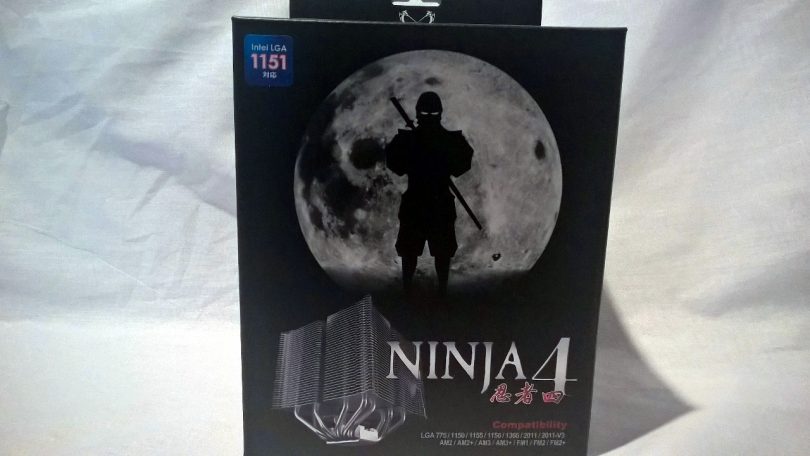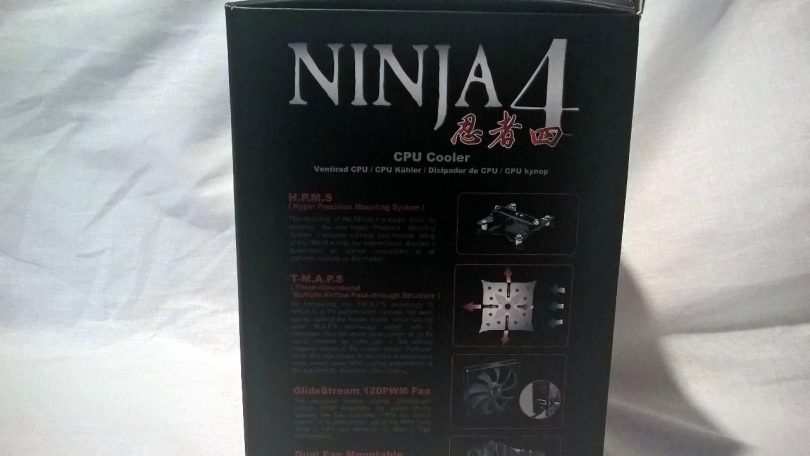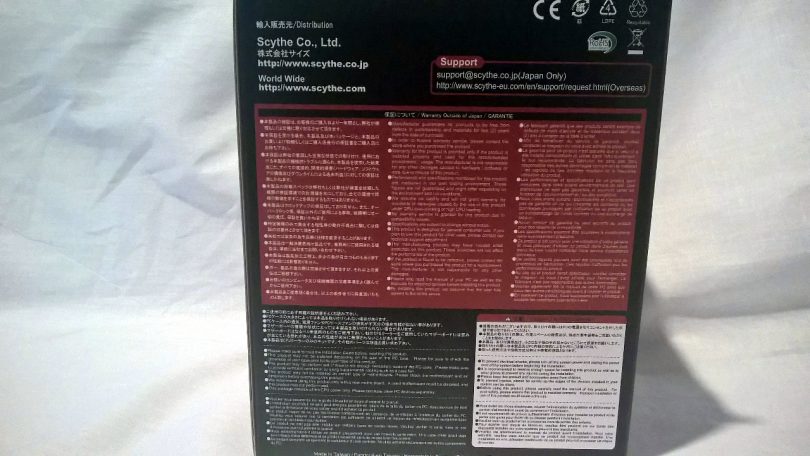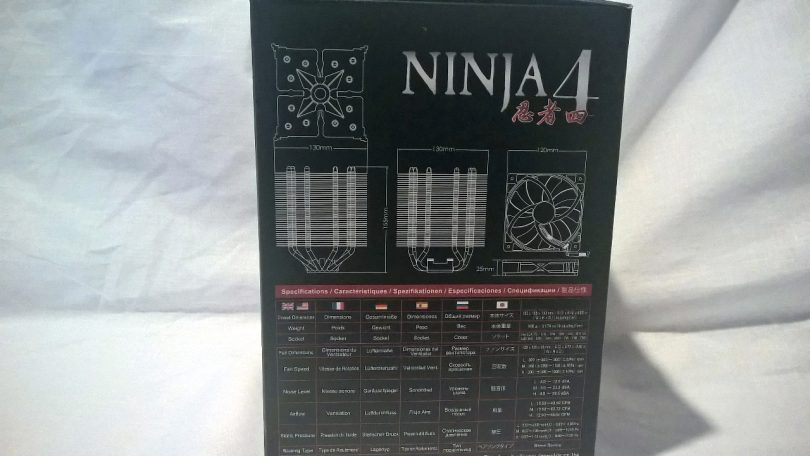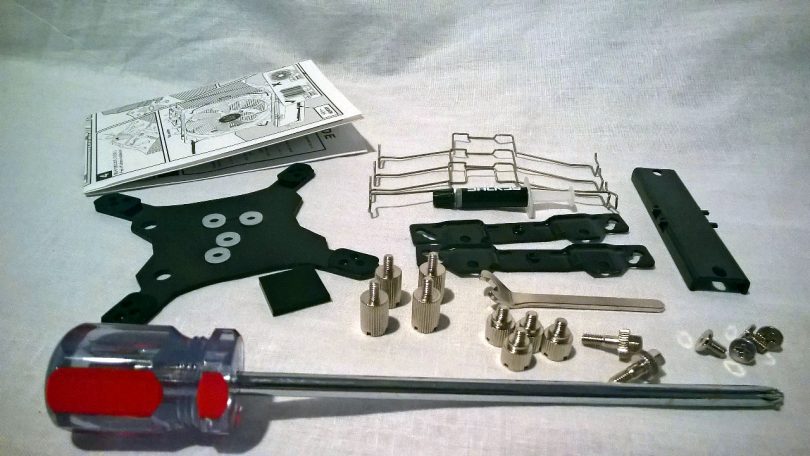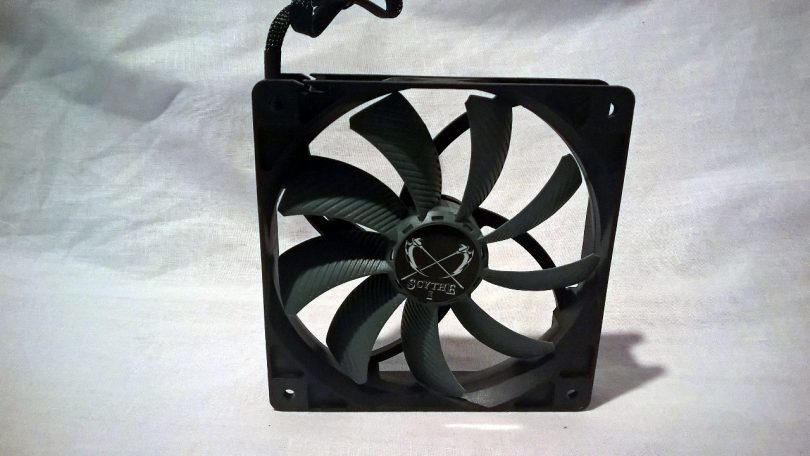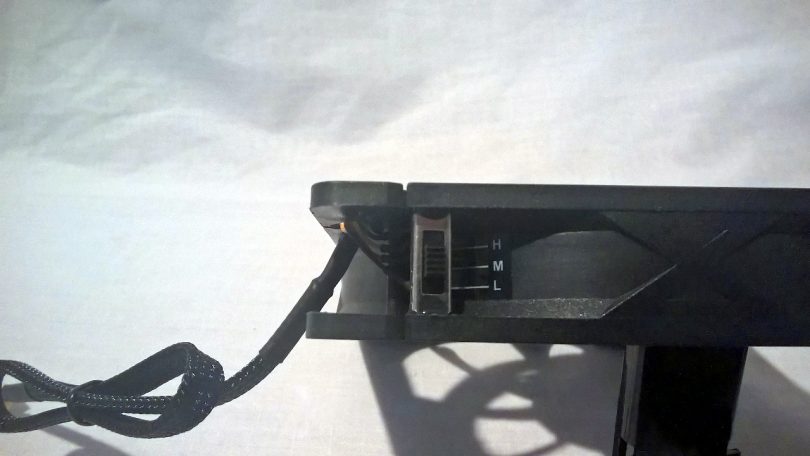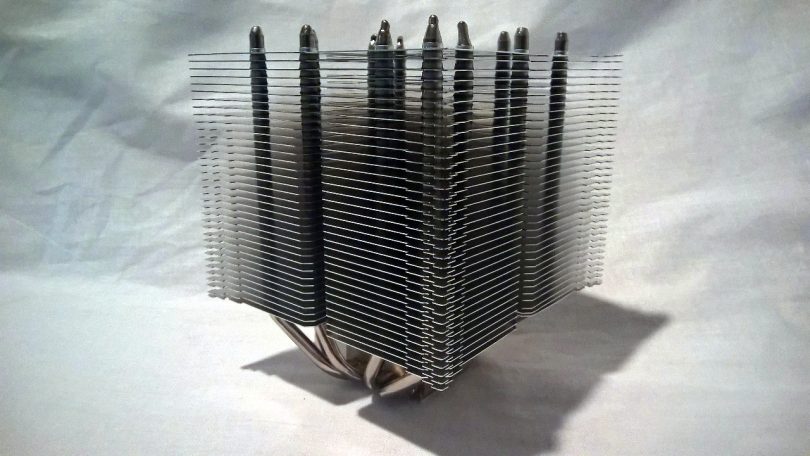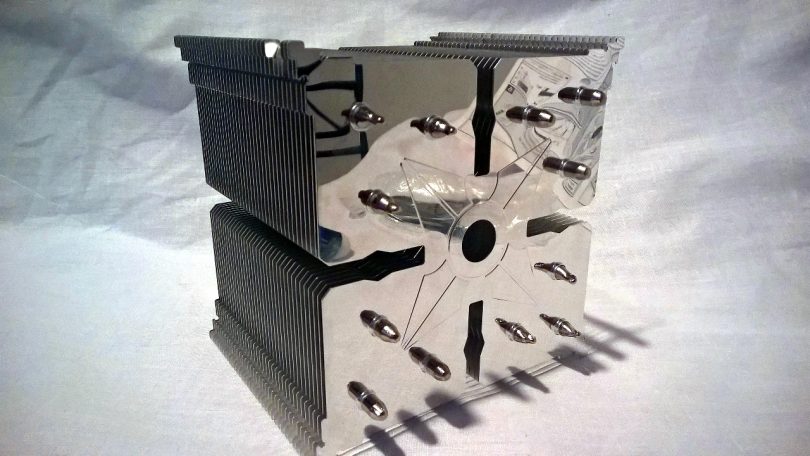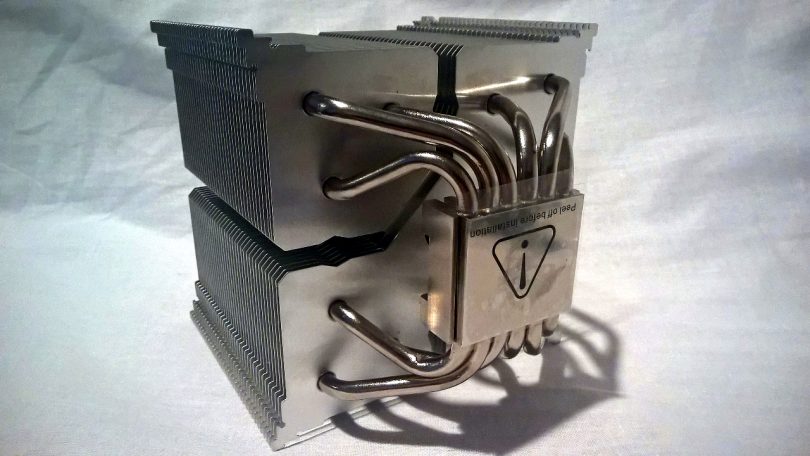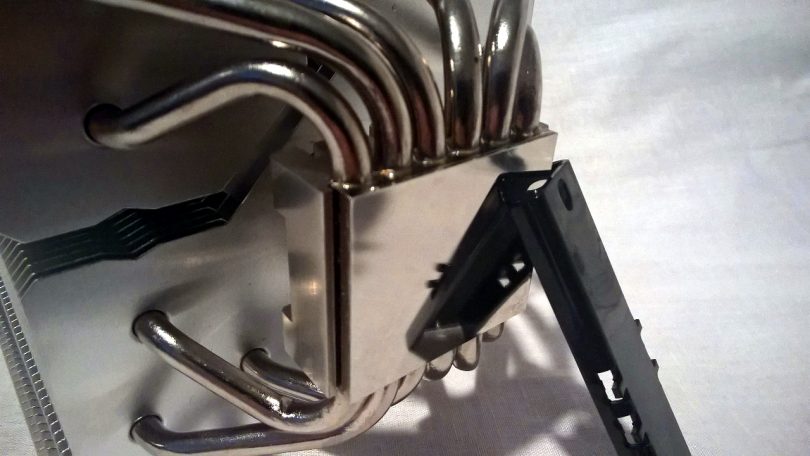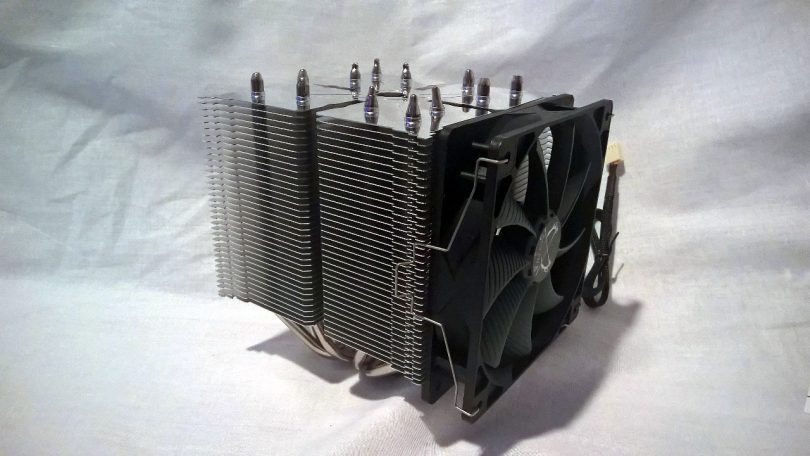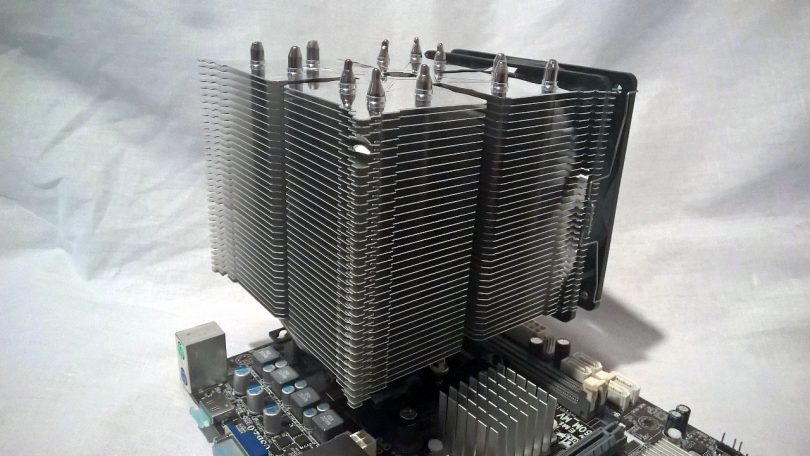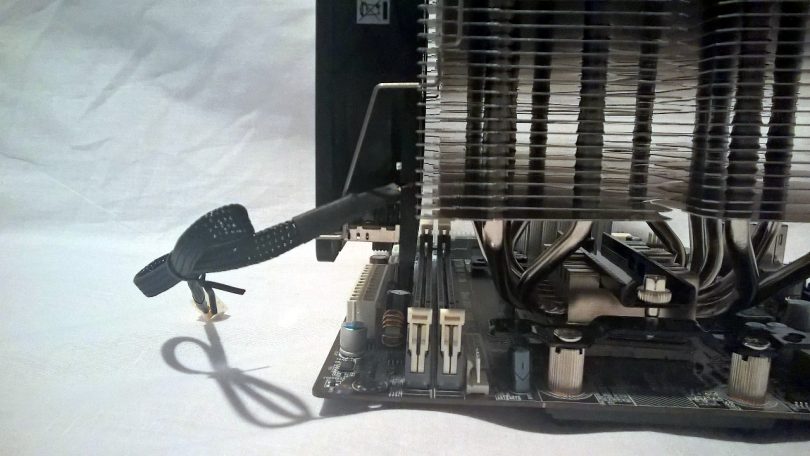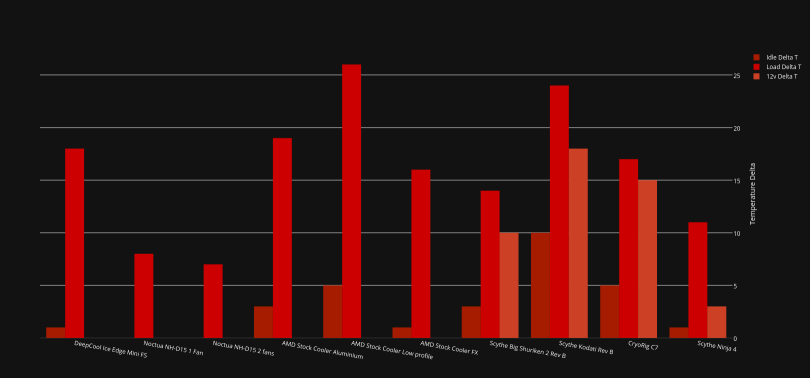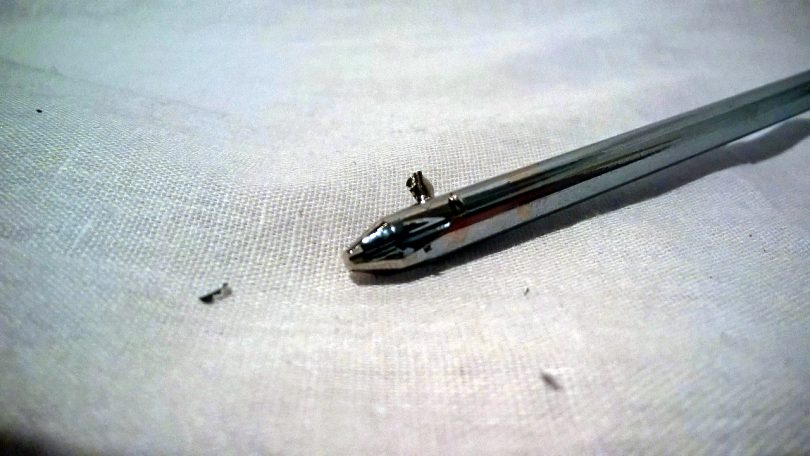With the predominance of small CPU coolers we’ve looked at recently, I thought I’d break it up a bit and review something a bit… bigger. The Scythe Ninja 4 is definitely not a small cooler, but the benefit of its massive size comes in the form of cooling performance that can deal with higher wattages and overclocks – or, alternatively, the ability to run at ultra low fan speeds and provide excellent acoustics as a result.
[mks_separator style=”blank” height=”2″]
About Scythe
From Scythe’s Website:
Selected PC Parts for DIY PC Experts
Scythe Co., Ltd., (Registered and incorporated in Tokyo Japan) originally started its business operation in Japan’s famous “Akihabara Electric Town” located in the metropolitan Tokyo, where visitors can find a variety of products from the latest computer parts to the world’s most advanced high-tech electric devices.
Sythe Co., Ltd., began its operation and business since November, 2002 as a distributor and the manufacturer of passive and low-noise PC parts. Since then, the company has established the R&D facility in Taiwan & China for production and quality control, and the USA office (in Los Angeles, California) & European office (in Hamburg, Germany) for customer care and sales support.
[mks_pullquote align=”right” width=”367″ size=”18″ bg_color=”#000000″ txt_color=”#ffffff”]At Scythe, we believe that the best ideas for product come simply from knowing customers’ needs and their expectations. Based on this philosophy, the PC enthusiasts working at Scythe know what to develop because that is exactly what we would like to have for ourselves too! We offer products with 100% quality assurance and total pride, and if the product has the Scythe name on it, you can rest assure that its quality will be up to the “Zero Tolerance” standards![/mks_pullquote]
[mks_separator style=”blank” height=”2″]
The Scythe Ninja 4
| HEATSINK SPECIFICATION | |
|---|---|
| Dimension ( with fan ) | L130 mm x W153 mm x H155 mm |
| Weight ( with fan ) | 900 g |
| Weight ( without fan ) | 780 g |
| Heat pipes | 6mm copper heatpipe x 6 |
| Fin Material | Aluminium |
| Fin Count | 36 fins effective |
| Copper Base | Copper nickel plated |
| RAM Height Limit | 39 mm |
| TDP | Not specified |
| Replaceable Fan? | Yes |
| FAN SPECIFICATION | |
|---|---|
| Dimension | L120 mm x W120 mm x H25 mm |
| Weight | 120 g |
| Rated Speed | 300 ~ 1500 RPM ±10 % |
| Noise Level | 4 – 19.5 dBA |
| Air Flow | 12.93 – 84.64 CFM |
| Air Pressure | 0.07 – 1.79 mmH2O |
| Ampere | 0.22 A |
The Ninja 4 has compatibility with AMD sockets AM2, AM2+, AM3, AM3+, FM1, FM2 and FM2+ (as well as some variants of Socket 1207). On the Intel side, compatibility is with sockets 1150, 1151, 1155 and 1156, as well as LGA775, LGA2011 and LGA2011 V3.
Unboxing
The Ninja motif is a strong part of Scythe’s marketing. Featured on the front of the box, they’ve gone so far as to print a silhouette of a ninja in front of a moon.
This side of the box forgoes the shiny graphics, and instead lists the various technologies designed into the cooler itself – most notably their mounting system (which we’ll come back to), the airflow profile, the included Glidestream fan, and the ability to mount two fans to the tower.
The opposing side of the box presents the manufacturer’s guarantee, as well as a few warnings, in multiple languages, and in the expected microscopic-sized type.
The rear of the box lists full specifications of the cooler, in 6 different languages. Some handy engineering diagrams also display some of the cooler’s dimensions in a variety of places.
As we begin to unpack, we see that the Ninja 4 comes with a fairly large selection of mounting hardware, as well as a couple of tools (a spanner and a long phillips-head screwdriver, the latter being a very nice inclusion). A straightforward instruction manual is also included, as is a tube of Scythe thermal paste. Per usual, I applaud Scythe for including a tube of paste with this product, as it means that multiple uses is a possibility right out-of-the-box.
Note that you will need the original AMD backplate for use on the AM2/3 and FM1/2 platforms.
Next to come out of the box is the Glidestream 120mm fan, which is a gorgeous looking unit. The black and grey color scheme should suit most builds aesthetically, and the grooves on the fan blades provide an interesting look in their own right (while also providing some reduced air resistance, according to Scythe). The fan itself has a small hub design, enabling larger blades and greater airflow.
A notable included feature of the fan is that of a manual switch, mounted within the frame, for selecting fan speeds. This enables the fan to be speed-limited to around 800, 1150 and 1500 rpm depending on the mode selected. For those after low noise, this sort of hard control on fan speed is quite welcome.
And last, but not least, we have the tower cooler itself. This is indeed a sizable cooler, but as mentioned before, the wide spaced fins could very well enable a user to run the fan at its lowest speed while still achieving adequate cooling.
Speaking of which, the cooler has a symmetric, square footprint, which is good in terms of maintaining compactness in any orientation – but this also means that rotating it will not achieve better board fitment in tight layouts, as one can sometimes get away with for other units.
The top of the cooler is very polished. So polished, in fact, that I struggled to take this shot (across 4 to 5 attempts) just to ensure I was not in the reflection!
The 6 heatpipes are also visible, piercing the top fin – they make a ‘U’ shape that coalesces at the bottom plate, and pass through the fins twice, hence the 12 visible tips.
On the bottom, we see that the base is made from nickel-plated copper. The Ninja 4’s split fin design is also clearly visible here.
The base place is very well machined and polished, offering a clear reflection with minimal distortion.
And finally, we see how the fan is mounted to the cooler. The fan clips are reminiscent of the Noctua-style mounting mechanism, and is consequently very easy to use.
[mks_separator style=”blank” height=”2″]
Hardware Compatibility
Photos of this cooler all by itself don’t really convey just how large it is, but once we put some other hardware in the picture, you can begin to appreciate the size. Here, we have the cooler mounted to our test board, and you can immediately see how simply massive the Ninja 4 is.
While installing the tower, I did find the mounting mechanism to be somewhat fiddly, and would have preferred that the mounting bar was fixed to the cooler base. The bar moved around very easily when attempting to mount the cooler, and I had to ‘restart’ the mounting more than once just to ensure that everything was lined up perfectly.
This almost goes without saying, but the Ninja 4 may well limit RAM compatibility, depending on your board. Low profile modules are recommended.
[mks_separator style=”blank” height=”2″]
Cooling Performance
The SFFN test bench currently includes the following hardware:
- Gigabyte 970-D3P Motherboard
- Phenom II 555BE @ 3.2GHz, 89W TDP
- 8GB Crucial DDR3-1600 Value RAM (single DIMM)
- Hitachi 60gb 2.5″ 5400RPM SATA HDD (temporary!)
- Gigabyte R7-360
- Thermal Master 420W Power Supply
- Aluminium Test Bench Chassis
To test this cooler, we relied on relatively simple testing methodologies. Using Deepcool Z3 thermal paste (a budget, but decent performing, paste), we mounted the Scythe Ninja 4 to our 89w AMD Phenom.
To retrieve idle temps, we booted up Windows, loaded HW Monitor and left the system to idle for 10 minutes. The hottest core was recorded at that time.
To load the CPU, we ran Prime95 Blend, with 2 threads (as our CPU is a dual core part). After 20 minutes of load, we once again took the hottest CPU core at that time.
Finally, we repeated this test while having the CPU fan plugged directly into 12v, waited 10 minutes under load, and recorded the hottest core.
We also measured ambient temperatures and converted all results to Delta T (change from ambient) to normalize the results. The fans were run at ‘Normal’ fan control mode in our motherboard’s BIOS.
Second only to the truly huge Noctua NH-D15 (in BIOS fan control mode), the Scythe Ninja 4 is a very good performer across the field. Furthermore, at 12v, the fan was inaudible in ‘low’ mode, barely audible in ‘medium’ and audible but not at all annoying at ‘full’ speed.
[mks_separator style=”blank” height=”2″]
Final Thoughts
The Ninja 4 is an excellent product from Scythe, easily coping with our 89w Phenom CPU without breaking a sweat. In a sense, though, what makes the cooler notable has more to do with the flexibility and capability afforded by the sheer cooling power. Not many SFF cases will have the clearance to support this tower – but for the builders who have enclosures that can support the Ninja 4, there’s an awful lot to like. Enthusiasts focused on aggressive overclocking, exceptionally low thermals, or reduced noise, will all find something to love, even as those implementations are quite different in practice. And even aesthetically, the oversized Ninja 4 still manages to incorporate a stylized fin design that’s interesting to look at, even as the sheer footprint of the cooler obscures much of the motherboard below.
Build quality is excellent, though the packaging -nice as it looked – could use some work, as our test unit did have few bent fins at one corner. And, finally, the symmetrical design aids in a beautiful build, and provides as compact a footprint as you can muster at this size, though you’ll want to use two fans or no fans in order to maintain that symmetry.
Pros:
Big 120mm fan.
Supports most modern sockets.
Well-built.
Fan is replaceable and easy to mount.
Cons:
Possible conflicts on some boards, but this is a given with most coolers, especially of this class.
This:
This cooler is available for around US$52.99 from Amazon. [mks_separator style=”blank” height=”2″]
Thoughts? Discuss them in the forum.
Review sample provided by eTonix Media PR on behalf of Scythe.
[mks_separator style=”blank” height=”2″]
Here at SmallFormFactor.net we give manufacturers the ability to be part of the community. We offer a right to reply to hardware reviews. If a manufacturer responds, their comments will be posted here.

